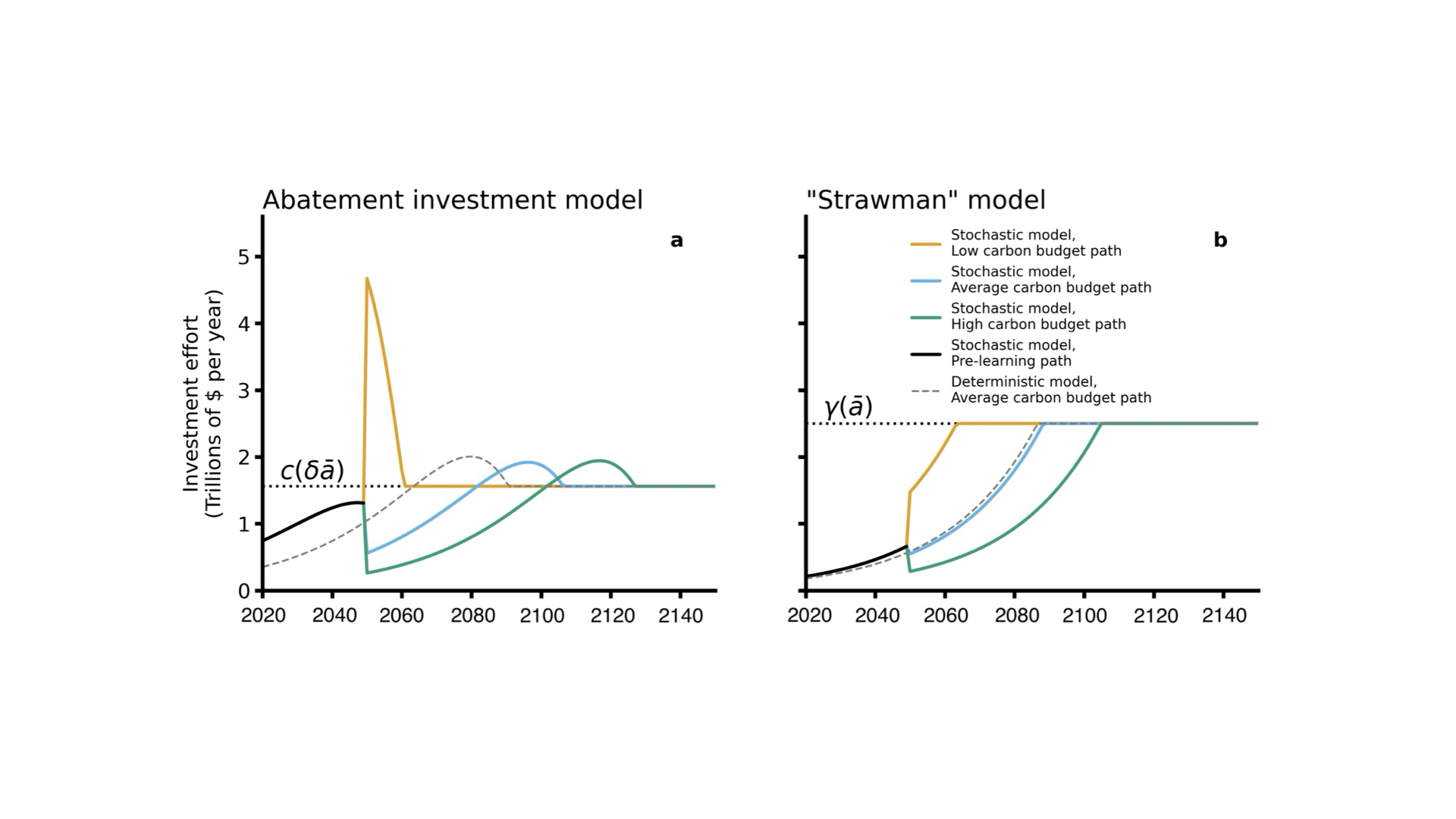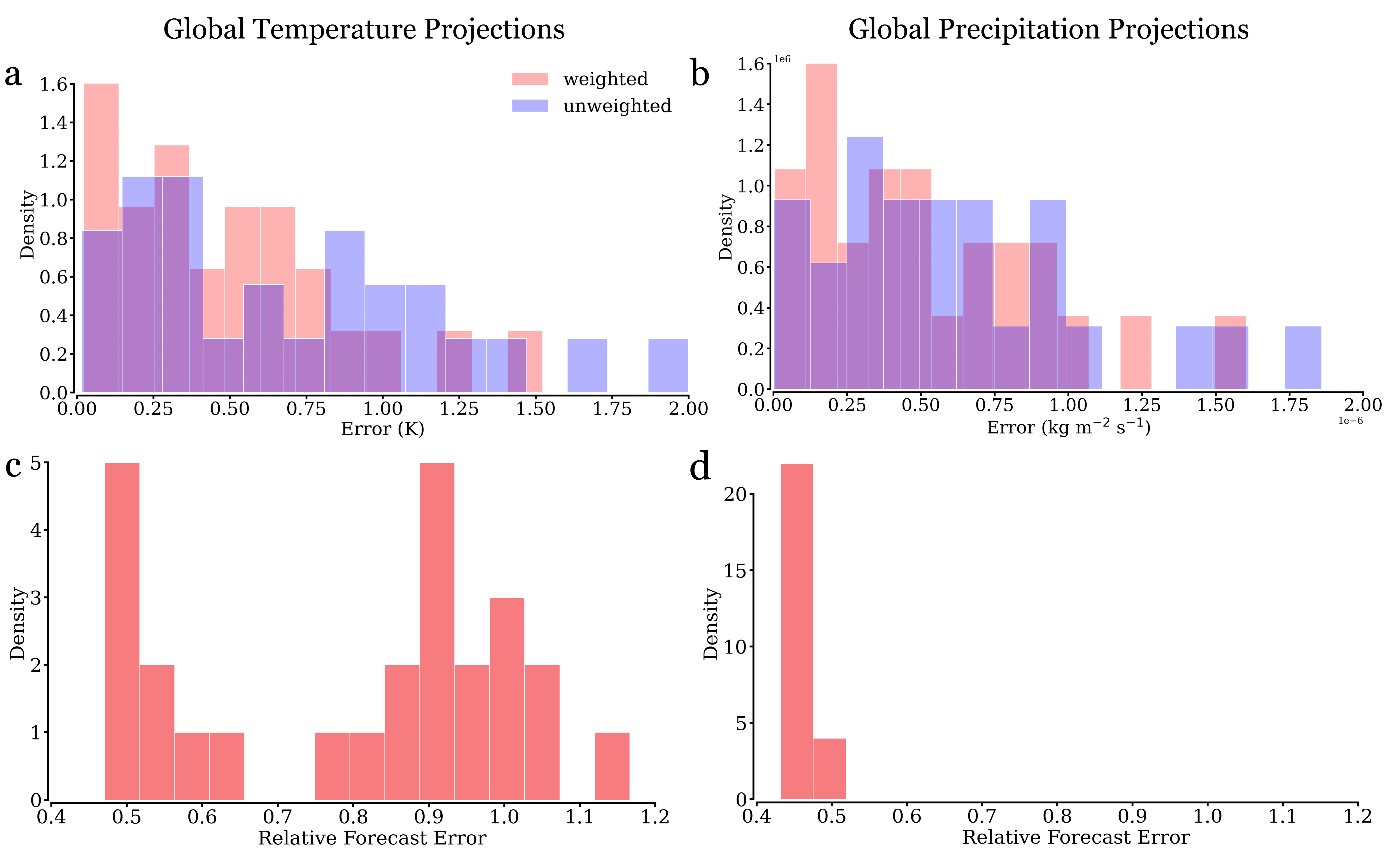Decarbonization Investment Strategies in an Uncertain Climate
Earth's Future

Project goal
Most state-of-the-art climate-economic models assume a frictionless economy as it pertains to greenhouse gas emissions abatement; this is to say, as soon as policymakers spend money on abating fossil fuel emissions, such emissions reductions manifest as soon as the check clears. In the real world, however, the economy possesses significant inertia that slows the deployment of new technologies, including fossil fuel abatement capital stocks, regardless on how much is spent by policymakers. This inertia generally calls for a more agressive near-term financial approach relative to the no intertia case, as there is a (often significant) time lag between spending and abatement. The goal of this project is to augment a model which captures economic inertia with a systematic treatement of climate unceratinty; we hypothesize that the effects of climate risk and economic inertia will compound, resulting in an ambitious, near-term financial strategy if the Paris Agreement temperature targets are to be met.
I am very pleased to have been hired as a short-term consultant at the World Bank Climate Change Group while this work is being completed!
Abstract
The Paris Agreement established that global warming should be limited to “well below” 2 deg C and encouraged efforts to limit warming to 1.5 deg C. Achieving this goal presents a challenge, especially given (a) adjustment costs, which penalize a swift transition away from fossil fuels owing to, for example, skilled labor scarcity, and (b) climate uncertainty that complicates the link between emissions reductions and global warming. This paper presents a modeling framework that explores optimal decarbonization investment strategies with adjustment costs and climate uncertainty. The findings show that climate uncertainty impacts investment in three ways: (a) the cost of policy increases, especially when adjustment costs are present; (b) abatement investment is front-loaded relative to a scenario without uncertainty; and (c) the sectors with the largest changes in investment are those that are “hard-to-abate”, such as heavy industry and agriculture, each of which have high investment costs and annual emission rates. The longer learning about climate uncertainty is delayed, the more these impacts are amplified. Each of these effects can be traced back to the carbon price distribution inheriting a “heavy tail” when climate uncertainty is present. The paper highlights how climate uncertainty and adjustment costs combined lead to heightened urgency for near-term investments in decarbonization.
Working paper and citation
Link to full paper; (World Bank Policy Research Working Paper No. 10743; published version can be found here)
Citation: Bauer, A. M., F. McIsaac, S. Hallegatte. Decarbonization Investment Strategies in an Uncertain Climate. Earth’s Future, 13(5), 2025. https://doi.org/10.1029/2024EF005851
Collaborators
Florent John McIsaac and Stephane Hallegatte.
Project code
All source code for this project can be found on my Github.
Presentations
- American Geophysical Union, December 2024
